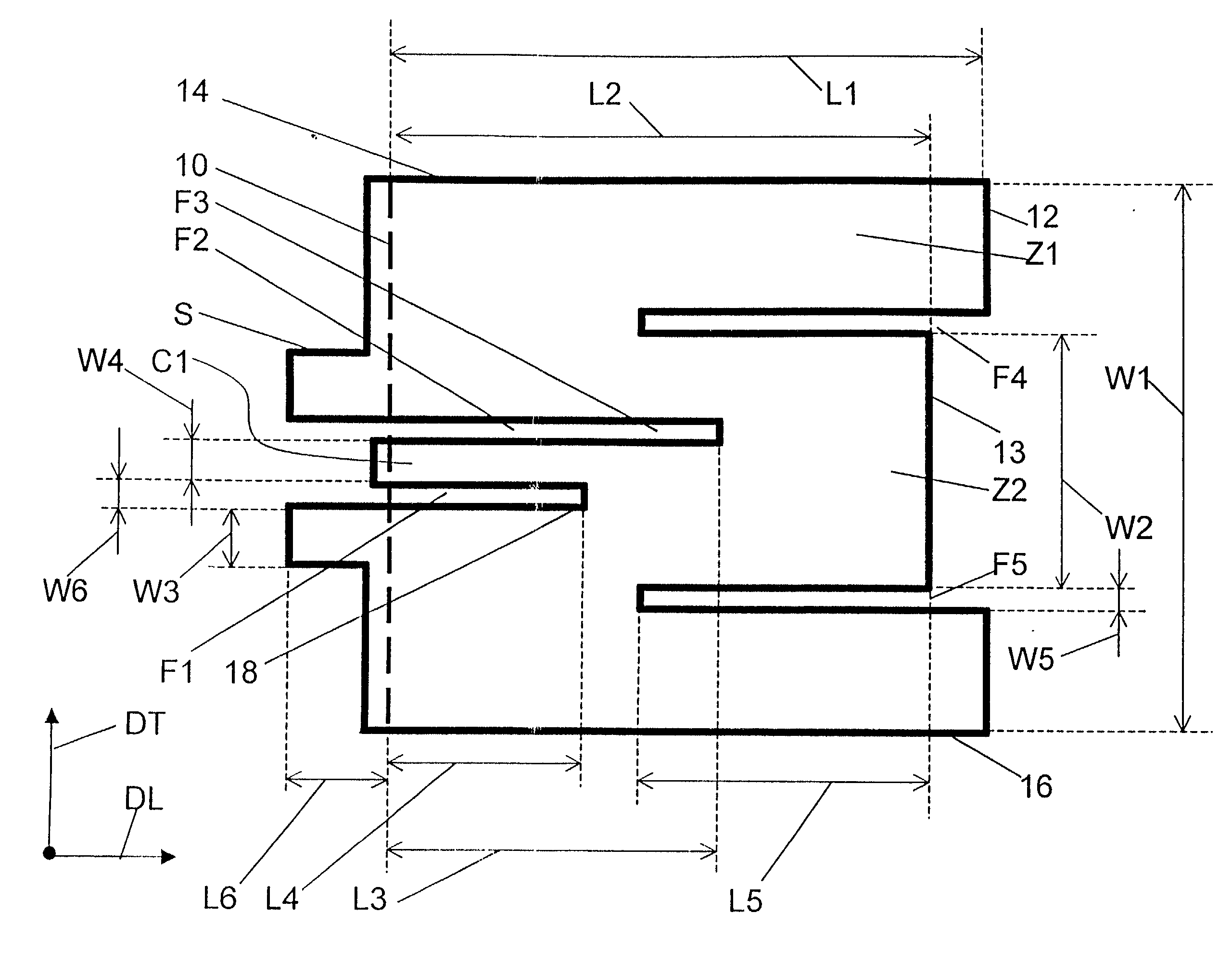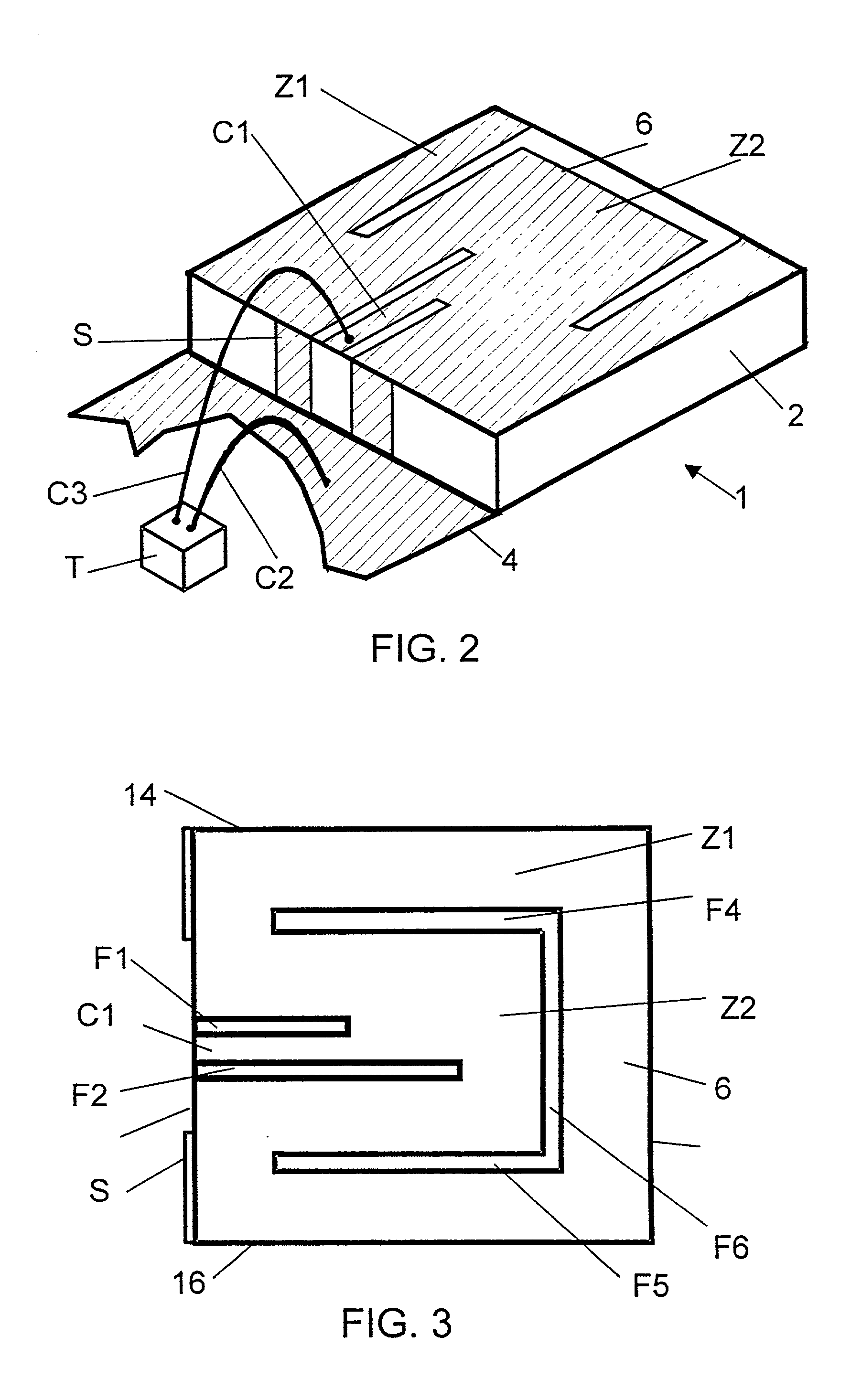Antenna with a conductive layer and a two-band transmitter including the antenna
a technology of conductive layer and antenna, which is applied in the direction of resonant antennas, substantially flat resonant elements, antenna earthings, etc., can solve the problems of high cost, difficult, and therefore expensive, to obtain the required resonant frequencies, and complex fabrication of antennas
- Summary
- Abstract
- Description
- Claims
- Application Information
AI Technical Summary
Benefits of technology
Problems solved by technology
Method used
Image
Examples
first embodiment
[0059] In the invention, the separator system includes two separator slots F4 and F5 in the patch 6 extending in the longitudinal direction DL from the front edge 12 of the patch, so that two lateral edges of the secondary resonance area Z2 consist of respective edges of the two slots and a front edge of the area consists of a segment 13 of the front edge between the two slots.
[0060] As shown in FIG. 1, a copper sheet constituting the patch 6 has an extension toward the front beyond a line that is intended to constitute the rear edge 10 of the patch. During fabrication of the antenna it is bent about this line along the rear edge of the substrate so that the extension is pressed onto the vertical edge of the substrate. Part of the extension is connected to the substrate to constitute the short circuit S. The short circuit is in a middle segment of this edge and is in two parts on respective opposite sides of the coupling system C1, F1, F2. The other parts of the extension are not sh...
second embodiment
[0081] In the invention, shown in FIG. 3, the separator system includes a U-shaped separator slot at a distance from the edges of the patch 6. The slot has two branches F4 and F5 connected together by a base F6. The two branches extend in the longitudinal direction, facing and spaced from the lateral edges 14 and 16, respectively, and the base extends in the transverse direction, facing and spaced from the front edge 12.
[0082] It is assumed that these two embodiments of the antenna operate in the following manner.
[0083] The coupling between firstly the standing wave of each of the two primary and secondary resonances and secondly the waves radiated in space occurs principally at one or more edges of the patch 6 or the separator slots F4, F5 and F6, or through the slots. This kind of edge or slot could therefore be called a primary or secondary radiating edge or slot, depending on the resonance concerned.
[0084] In both embodiments of the invention there is a single primary radiating ...
PUM
 Login to View More
Login to View More Abstract
Description
Claims
Application Information
 Login to View More
Login to View More - R&D
- Intellectual Property
- Life Sciences
- Materials
- Tech Scout
- Unparalleled Data Quality
- Higher Quality Content
- 60% Fewer Hallucinations
Browse by: Latest US Patents, China's latest patents, Technical Efficacy Thesaurus, Application Domain, Technology Topic, Popular Technical Reports.
© 2025 PatSnap. All rights reserved.Legal|Privacy policy|Modern Slavery Act Transparency Statement|Sitemap|About US| Contact US: help@patsnap.com



